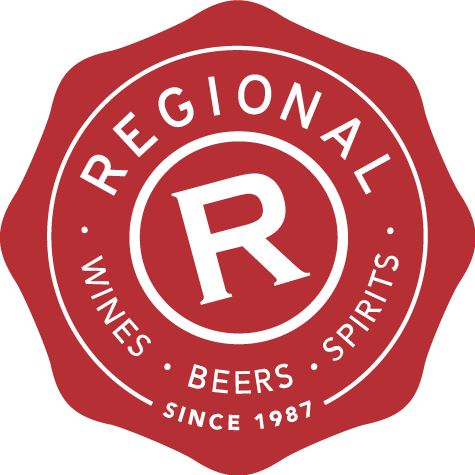
Black and White - A Brief Story of 13 Whiskies...
Last month saw two bottles of ancient blended whisky, retrieved from a shed, opened and tasted at Regional Wines. The whiskies were a White Horse circa 1957 and an Extra Special Old Highland Whisky circa 1937, so they weren’t old in the sense of cask age, rather, they were bought many years ago and had thus grown old. Here is the tale of these whiskies, over a hundred years in the making...
It is a young, teetotal grocery store owner named John Walker who sets our story in motion by selling whisky, gin and rum through his shop. Business is successful and the next generation, spurred by a relaxation in laws surrounding the blending of grain whiskies in 1860, create a brand that will usher in the modern era of blended whiskies and eventually conquer the world.
Around this time, a James Logan Mackie names a blended whisky after a coaching inn on Edinburgh’s Canongate known as the White Horse. As with the Walkers, life continues through the pursuant generation, and it his son, Peter Mackie, who registers the White Horse brand in 1891.
For the Walkers, it is also the next in line, Alec Walker, who creates the first commercial blend called Old Highland Whisky, the success of which leads to the purchase of the Cardhu distillery to supply malt to be used as the heart of the blend. The brand expands rapidly into three lines, Old Highland at 5 years old, Special Old Highland at 9 years old, and Extra Special Old Highland at 12 years old. The labeling on the lines is identical except for the colour; white, red and black - and as this is how they soon become commonly referred to, in 1909 the company rebrands to fit these common colour names. Thus is born Johnnie Walker Black.
Meanwhile the Mackies are working in partnership with John Graham, whose family lease the Islay distillery of Lagavulin, and as such, Peter Mackie quickly becomes a partner at Lagavulin, and its spirit becomes one of the key blending components for White Horse.
As with the Walkers, there is a deliberate intent from the Mackies to become involved with distillery ownership as a means of supplying malt spirit for blending, and in 1891, they become one of the partners in the Craigellachie Distillery Co Ltd. Their empire expands rapidly with investment in Coleburn Distillery, Clynelish Distillery Co. and Dailuaine-Talisker Co., thus ensuring a steady supply of the output from Coleburn, Clynelish, Talisker and Dailuaine distilleries.
It is at this point that Peter Mackie’s story darkens, with a bitter falling out between him and Laphroaig, for whom Mackie was agent. Following numerous court cases and various illicit shenanigans, a bitter Mackie poaches staff from Laphroaig and builds a bizarre facsimile of Laphroaig distillery on the Lagavulin site called Malt Mill in an effort to mimic the malts of Laphroaig. The whisky is never quite there, but regardless, becomes a key blending component for White Horse.
Of course, there are multiple malt components in these blended whiskies, with more blending options helping with the goal of hitting a consistent house style and distilleries such as Linkwood, a darling of the single cask independent bottling scene, have established a strong relationship with both Johnnie Walker and White Horse over the years.
And then there is the question of the grain whisky involved in our key old blends. The White Horse bottling hall was situated next door to Port Dundas distillery, and it is thought this was a likely source of its grain component - bringing us cannily to Hedonism by Compass box, a blend of bourbon aged grain from Port Dundas and Cameron Bridge. Interestingly, Compass Box is owned by John Glaser, former Marketing man for Johnnie Walker - offering a lovely example of the overlapping and incestuous world of whisky.
Many years later, the popularity of blends is on the rise once again with blended single malts now commonplace, and pushed by the likes of Adelphi with their Glover, E&K, Winter Queen, Brisbane and Glenborrodale, the latter offering a blend of casks from Edrington distilleries (Macallan, Highland Park, Glenrothes etc), most likely destined for the infamous Famous Grouse blend.
Despite the modern world of progressive blends, we also see a fashion for old styled reminiscent whiskies and MacDonalds Tradition Ben Nevis is a great example of just such a whisky - its dark and oily peat offering a possible glimpse of blends from the past when people were after a bit of grunt in their scotch and peat was arguably more fashionable.
Here’s how the whiskies placed over the two nights…
- Talisker 57 Degrees North 57% - 8.83
- Linkwood Cadenhead's 1997 / 20yo 53.7% - 8.54
- Lagavulin 12yo 56.8% - 8.33
- Clynelish Adelphi 1996 20yo 50.6% - 7.78
- McDonald’s Traditional Ben Nevis 46% - 7.78
- Compass Box Hedonism 7.69
- White Horse 2018 7.32
- Glenborrodale Adelphi 8yo 46% 7.29
- Craigellachie 13yo 46% 7.26
- Johnnie Walker Extra Special Highland Whisky 1937 - 7.17
- Johnnie Walker Black Label Current - 6.83
- Cardhu 12yo 40% - 6.83
- White Horse 1957 - 5.63
